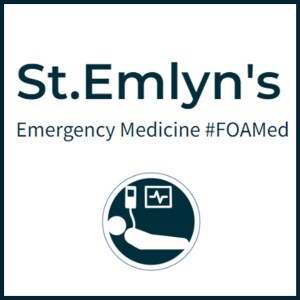
- Podcast Features
-
Monetization
-
Ads Marketplace
Join Ads Marketplace to earn through podcast sponsorships.
-
PodAds
Manage your ads with dynamic ad insertion capability.
-
Apple Podcasts Subscriptions Integration
Monetize with Apple Podcasts Subscriptions via Podbean.
-
Live Streaming
Earn rewards and recurring income from Fan Club membership.
-
Ads Marketplace
- Podbean App
-
Help and Support
-
Help Center
Get the answers and support you need.
-
Podbean Academy
Resources and guides to launch, grow, and monetize podcast.
-
Podbean Blog
Stay updated with the latest podcasting tips and trends.
-
What’s New
Check out our newest and recently released features!
-
Podcasting Smarter
Podcast interviews, best practices, and helpful tips.
-
Help Center
-
Popular Topics
-
How to Start a Podcast
The step-by-step guide to start your own podcast.
-
How to Start a Live Podcast
Create the best live podcast and engage your audience.
-
How to Monetize a Podcast
Tips on making the decision to monetize your podcast.
-
How to Promote Your Podcast
The best ways to get more eyes and ears on your podcast.
-
Podcast Advertising 101
Everything you need to know about podcast advertising.
-
Mobile Podcast Recording Guide
The ultimate guide to recording a podcast on your phone.
-
How to Use Group Recording
Steps to set up and use group recording in the Podbean app.
-
How to Start a Podcast
-
Podcasting
- Podcast Features
-
Monetization
-
Ads Marketplace
Join Ads Marketplace to earn through podcast sponsorships.
-
PodAds
Manage your ads with dynamic ad insertion capability.
-
Apple Podcasts Subscriptions Integration
Monetize with Apple Podcasts Subscriptions via Podbean.
-
Live Streaming
Earn rewards and recurring income from Fan Club membership.
-
Ads Marketplace
- Podbean App
- Advertisers
- Enterprise
- Pricing
-
Resources
-
Help and Support
-
Help Center
Get the answers and support you need.
-
Podbean Academy
Resources and guides to launch, grow, and monetize podcast.
-
Podbean Blog
Stay updated with the latest podcasting tips and trends.
-
What’s New
Check out our newest and recently released features!
-
Podcasting Smarter
Podcast interviews, best practices, and helpful tips.
-
Help Center
-
Popular Topics
-
How to Start a Podcast
The step-by-step guide to start your own podcast.
-
How to Start a Live Podcast
Create the best live podcast and engage your audience.
-
How to Monetize a Podcast
Tips on making the decision to monetize your podcast.
-
How to Promote Your Podcast
The best ways to get more eyes and ears on your podcast.
-
Podcast Advertising 101
Everything you need to know about podcast advertising.
-
Mobile Podcast Recording Guide
The ultimate guide to recording a podcast on your phone.
-
How to Use Group Recording
Steps to set up and use group recording in the Podbean app.
-
How to Start a Podcast
-
Help and Support
- Discover

Ep 74 - ED Handover in the resus room: A panel discussion at SMACC DUB. (Part 2)
Trauma handovers are critical transitions in patient care, transferring responsibility from pre-hospital teams to in-hospital teams. These moments are crucial for ensuring patient safety and the continuation of effective treatment. This summary explores the best practices for trauma handovers, focusing on preparation, timing, communication, and the integration of feedback.
Preparation: Utilizing Golden TimeEffective trauma handovers begin with thorough preparation. The period between receiving the notification of an incoming trauma patient and their arrival is often called "golden time." This time should be used to organize and prepare the multidisciplinary team, including in-patient specialists, ED staff, nurses, doctors, and radiologists. Key preparatory steps include:
- Role Allocation: Assign clear responsibilities, such as the trauma team leader, scribe, airway manager, and primary survey conductor. It is crucial to ensure that team members are both competent and confident in their assigned roles, as these attributes, while related, are distinct.
- Predictive Planning: Use pre-hospital information to anticipate the patient's needs. For instance, a report of a patient with a chest stab wound and hypotension suggests the need to prepare for a thoracotomy.
Timing is essential in trauma care, particularly in avoiding early calls to the trauma team. At Southampton, the recommended practice is to call the team together approximately 15 minutes before the patient’s expected arrival, avoiding exact time estimates. This strategy helps maintain team readiness and focus. The risks of early calls include loss of focus due to prolonged waiting and the potential for team members to become distracted by other tasks.
Conducting the Team BriefingA comprehensive and unified briefing is vital upon the trauma team’s assembly. This briefing should involve the entire multidisciplinary team, preventing any division into subgroups and ensuring that all members receive the same information. A good practice is for team members to introduce themselves using first names, which helps break down hierarchical barriers and fosters a collaborative environment. The briefing should also include a mission rehearsal, outlining the specific tasks and roles each member will perform upon the patient's arrival.
The Handover ProcessThe actual handover begins when the patient arrives. The in-hospital team leader should introduce themselves to the pre-hospital team and determine if the patient is stable enough for a hands-off handover. This approach, modeled after military practices, ensures that the handover is conducted calmly and clearly. If the patient is unstable, the pre-hospital team should continue leading the resuscitation until it is safe to hand over control.
A structured framework, such as AppMist (Age, Time of injury, Mechanism, Injuries, Signs, and Treatments), should be used to deliver concise and critical information during the handover. This approach ensures that only the essential information is communicated, focusing on the most pertinent details for the ongoing treatment.
Addressing Pre-Hospital ChallengesThe pre-hospital environment is inherently stressful and challenging, with limited resources and a high cognitive load. Pre-hospital teams often face the dual pressures of managing critically ill patients and communicating effectively with the receiving hospital. It is crucial for in-hospital teams to recognize these challenges and refrain from criticizing or undermining pre-hospital efforts during the handover. Instead, the focus should be on receiving and clarifying the necessary information to continue patient care.
Pre-hospital teams should aim to deliver concise, relevant information during the handover. Ending the handover with a clear statement, such as "That completes my handover," followed by an offer to answer any urgent questions, helps ensure clarity and completeness.
Feedback and Continuous ImprovementClosing the feedback loop is an essential aspect of improving trauma care. Providing feedback to pre-hospital teams about patient outcomes helps refine their assessment and treatment strategies. This feedback should be delivered sensitively, acknowledging the emotional and high-pressure nature of pre-hospital work.
Constructive feedback should focus on confirming or refuting pre-hospital assessments and decisions, providing a learning opportunity for future cases. It is essential to approach feedback with empathy and professionalism, fostering a supportive environment for continuous improvement.
Controversial Aspects and Best PracticesCalling the Full Trauma Team: There is a debate over whether to always call the entire trauma team for every alert. At our hospital, we favor over-calling to ensure that all necessary resources are immediately available, even if it means releasing some staff after assessing the situation.
Pre-Hospital Requests for Specific Interventions: In-hospital teams must use their discretion when responding to pre-hospital requests for specific interventions or specialist involvement. Trust and familiarity with the pre-hospital team's capabilities influence these decisions. For example, while cardiothoracic surgeons are not standard members of our trauma team, they may be involved in cases of traumatic cardiac arrest with penetrating trauma.
Conclusion: A Framework for Effective Trauma HandoverEffective trauma handovers are essential for patient safety and optimal care. This process requires careful preparation, clear communication, and seamless coordination between pre-hospital and in-hospital teams. By adhering to standardized practices, fostering a collaborative environment, and integrating constructive feedback, healthcare providers can significantly enhance the quality of trauma care.
We encourage healthcare professionals to share their experiences and insights, contributing to a broader understanding of best practices in trauma handovers. Whether you are working in trauma centers, units, or in different healthcare systems worldwide, your input is invaluable in refining these critical processes.
Thank you for engaging with this discussion on the St Emlyns blog. We look forward to continuing this conversation and exploring ways to improve patient care in emergency medicine.
More Episodes
 2019-02-23
2019-02-23
 4.3k
4.3k
 2019-02-17
2019-02-17
 3.1k
3.1k
 2018-12-31
2018-12-31
 3.5k
3.5k
 2018-12-23
2018-12-23
 3.4k
3.4k
 2018-11-28
2018-11-28
 3.8k
3.8k
 2018-11-13
2018-11-13
 3.6k
3.6k
 2018-10-28
2018-10-28
 3.1k
3.1k
 2018-10-22
2018-10-22
 3.5k
3.5k
 2018-10-16
2018-10-16
 3.4k
3.4k
 2018-09-28
2018-09-28
 3.7k
3.7k
 2018-08-17
2018-08-17
 3.5k
3.5k
 2018-06-15
2018-06-15
 3.8k
3.8k
 2018-05-31
2018-05-31
 5.0k
5.0k
 2018-05-26
2018-05-26
 3.3k
3.3k
Create your
podcast in
minutes
- Full-featured podcast site
- Unlimited storage and bandwidth
- Comprehensive podcast stats
- Distribute to Apple Podcasts, Spotify, and more
- Make money with your podcast
It is Free
- Privacy Policy
- Cookie Policy
- Terms of Use
- Consent Preferences
- Copyright © 2015-2025 Podbean.com


